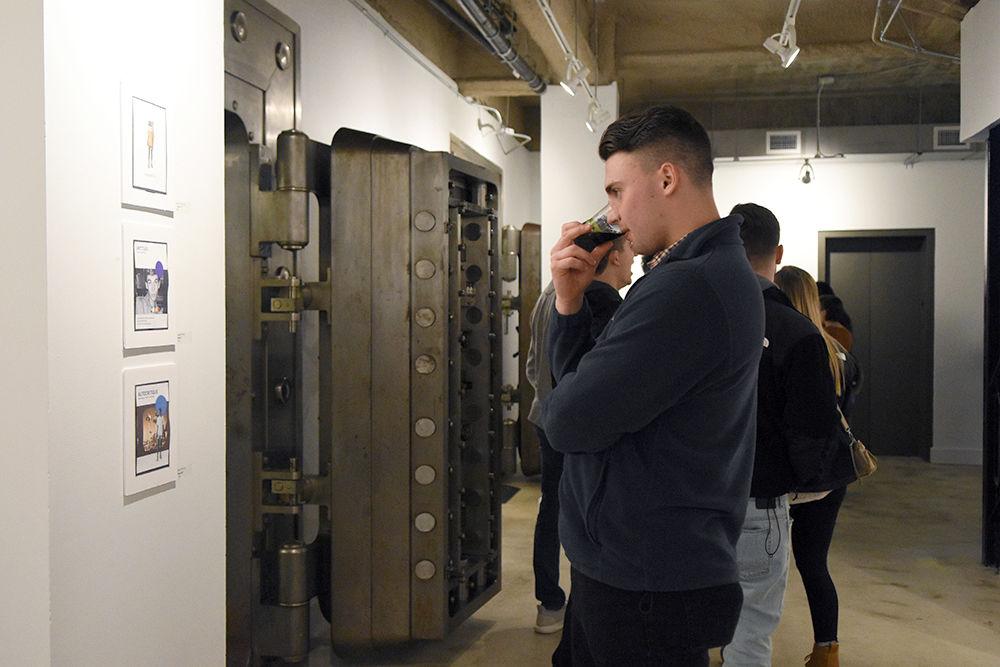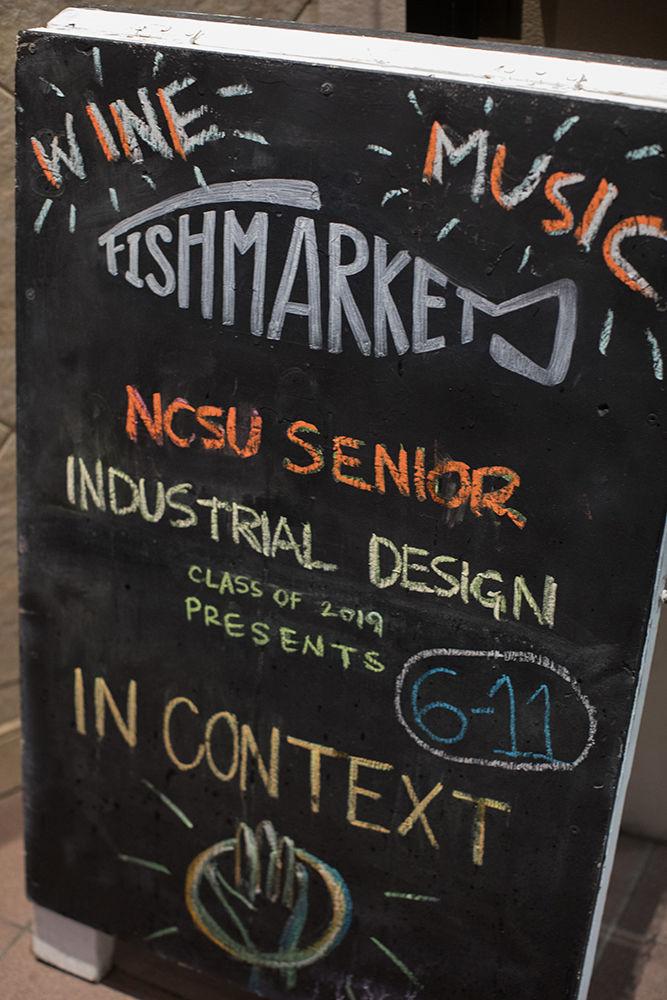The Fish Market Gallery is a student-run art gallery operated through the College of Design in downtown Raleigh. The gallery’s unusual name has nothing to do with the ocean; the name comes from a pun on the College of Design’s acronym. Fish Market has been running since 2003 and is known for its eclectic exhibitions and atmosphere. In February 2019, Fish Market moved into a new venue on Fayetteville Street .
Claire Tracy, a fourth-year majoring in design studies and director of Fish Market, described the origin of the gallery
“About 10 years ago, we had some students in the College of Design that wanted a way to showcase their work in a gallery setting,” Tracy said. “They went out and searched for someone who had a space that they could use and donate. So, for the past few years, we have been using that space, but just recently we have moved to a new space … and they moved us into … an old bank vault.”
Logan Murray, an alum from the art and design program and an assistant director at Fish Market, spoke about his thoughts on the new space.
“I think the Fish Market is in a relatively transitive space,” Murray said. “It’s really cool having this new space and having this excitement in … downtown Raleigh about the space, because it was stagnating a little.”
Fish Market provides the students of NC State with a judgement free venue to share their artwork. According to Tracy, the gallery is accessible to all students, and any student can submit their art to the showcase.
“We curate, but we don’t necessarily discriminate,” Murray said. “If somebody has an idea and it fits with the theme and it is high enough quality, that’s the mark we have to hit…. Other than that, it will be accepted. It means that people can show very radical ideas. It’s a safe space to do that.”
Murray continued with a story about one of his friends who displayed his own unconventional art at Fish Market.
“My buddy … did a whole exhibition where he was talking about tree prints … he did these prints with his friend’s hair as the paintbrush,” Murray said.“He used her hair as the paint brush because of the narrative; it tied in. It was very strange because he displayed the hair alongside the prints, and we let him; we gave him his own space for it. It was nice because he was like, ‘I haven’t had a chance to show something like that and display that kind of showing and that intimacy but in public.’ That’s what it’s about being an artist: It’s intimacy but in public.”
The gallery allows for connection and dialogue between the people of Raleigh and students at NC State. Lydia Farro, a second-year studying art and design and an assistant director for Fish Market, spoke about this important aspect of the gallery.
“I feel like … a lot of time with student shows there’s a divide between the public and the school, and being in downtown Raleigh we can connect more with people coming in,” Farro said. “People might not even know that State has a design school. We have new people every time we have the show and a lot of adults aren’t really involved with NC State, and I feel like they have some sort of connection through Fish Market from us being able to display our work.”
However, a lot of work goes into running the gallery, and there are many challenges posed in trying to maintain the high quality. Murray spoke about one challenging aspect he experienced through being a part of Fish Market.
“We need money,” Murray said. “It’s fascinating how many resources go into doing something as simple as ‘all we are is a box with white walls,’ but the walls have to stay white. It has to stay clean. It’s run entirely by the students and it’s set up…. We need wine; we need donations; we need to keep the lights on. I want people to realize that more behind the scenes happens, both in terms of the students’ projects and in terms of the actual administration.”
Ultimately, Fish Market provides the students of NC State with an inclusive space to share their work and enjoy the work of their fellow classmates.
“I love seeing our students in the design school get out of the studio and come see their fellow classmates’ hard work,” Tracy said. “And the feeling when you have your own work up and someone likes it and wants to buy it even, that’s such a great feeling to have. Helping students to see that their work is worth something and it can be put in a gallery is very exciting.”














